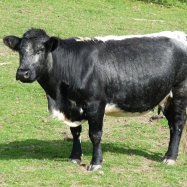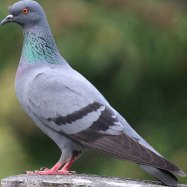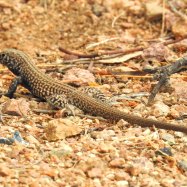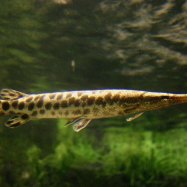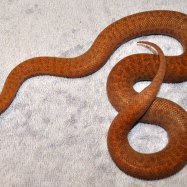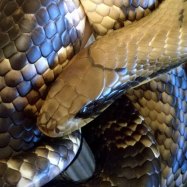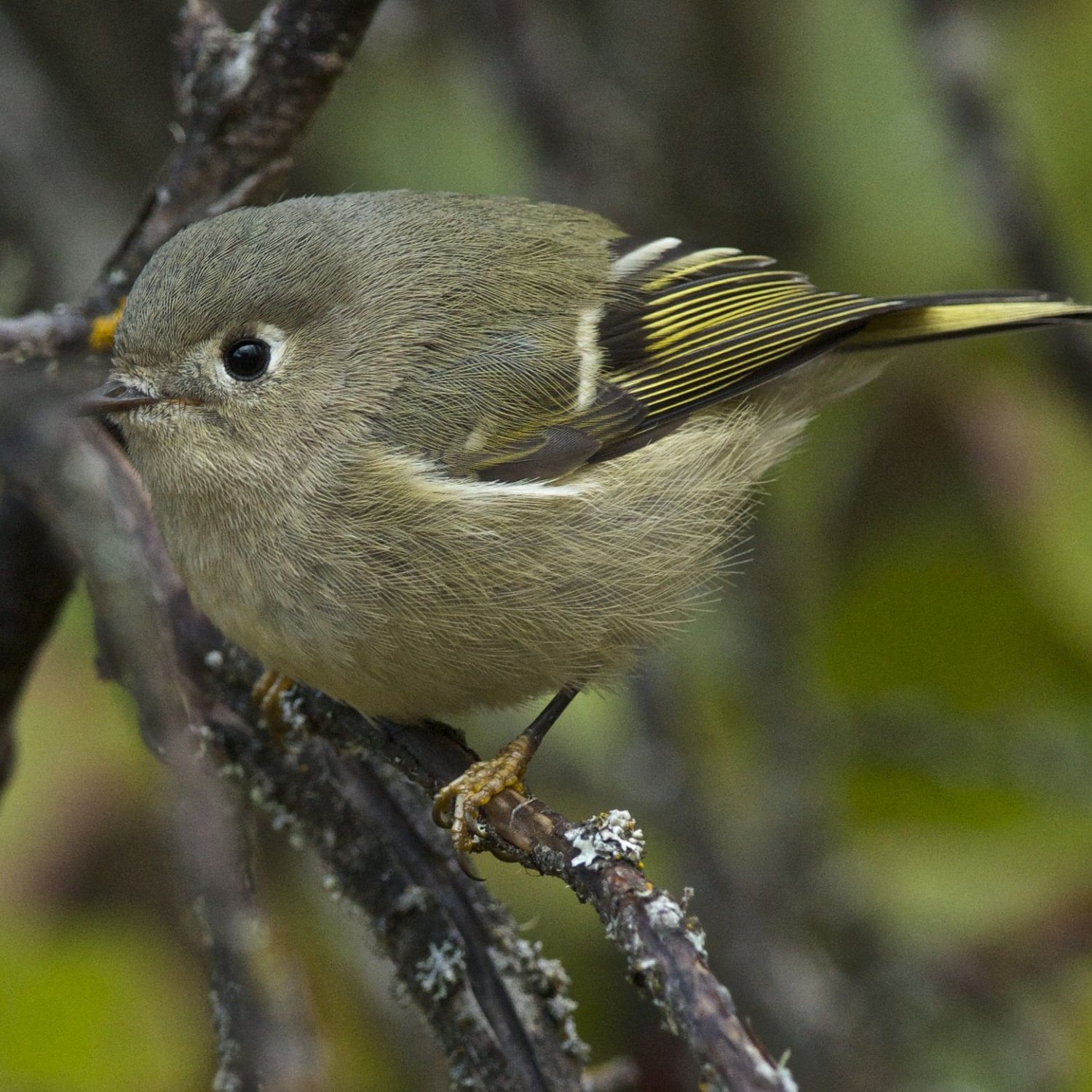
Ruby Crowned Kinglet
9 - 11 cm
The Ruby Crowned Kinglet is a small and compact bird found throughout North America. With a length of 9-11 cm, this bird belongs to the Regulidae family. Keep an eye out for its striking ruby crown as it flits through the trees! #RubyCrownedKinglet #NorthAmericanBirds #RegulidaeFamily
Animal Details Summary:
Common Name: Ruby Crowned Kinglet
Kingdom: Animalia
Habitat: Boreal and mixed forests
Ruby Crowned Kinglet: The Tiny Bird with a Big Personality and Stunning Crown
In the vast expanse of the North American forests, a small but mighty bird captures the attention of keen observers with its vibrant colors and charming personality. Meet the Ruby Crowned Kinglet, scientifically known as Regulus calendula, a passerine bird belonging to the Regulidae family.When one thinks of beautiful and majestic birds, usually large and colorful species come to mind. However, the Ruby Crowned Kinglet breaks all stereotypes with its small size but stunning plumage Ruby Crowned Kinglet. In this article, we will delve into the fascinating world of this tiny bird and discover its unique features, habitat, behavior, and more.
An Unmistakable Beauty
At first glance, the Ruby Crowned Kinglet may seem like just another small and mundane bird. But closer observation will reveal its breathtaking beauty. This tiny bird measures only 9-11 cm in length, with a body shape that is compact and slightly round.The Olive-green feathers of the Ruby Crowned Kinglet blend perfectly with the dense foliage of its habitat, making it challenging to spot. However, a distinctive white wingbar on each wing and a flash of bright red (males) or yellow (females) crown on their heads make them stand out in the crowd.
Such striking colors are not just for aesthetic purposes but have an essential function. Male Ruby Crowned Kinglets use their vibrant red crown to display during courtship, attracting potential mates. This impressive display of colors is also an indication of territorial ownership and dominance Rat Snakes.
Hidden Gems of the Forests
The Ruby Crowned Kinglets call the boreal and mixed forests of North America their home. These forests are primarily located in the United States and Canada, making up the geographical distribution of this species. They are also commonly found in the mountainous regions of these countries.Within their habitat, these tiny birds can be found in dense vegetation and thick underbrush. They are skilled at navigating through the foliage, foraging for insects and spiders. Despite being small in size, Ruby Crowned Kinglets are daring and agile hunters, using their sharp beaks to capture prey.
In terms of migration, the Ruby Crowned Kinglets are situational migrants, moving to warmer regions during harsh winters but returning to their breeding grounds in the spring. During migration, they are often seen in mixed flocks with other small birds, such as warblers and chickadees.
A Diet of Insects and Spiders
As mentioned earlier, the Ruby Crowned Kinglet is an insectivorous bird, meaning its diet consists primarily of insects and spiders. Due to their small size, these birds feed on tiny insects such as beetles, flies, and caterpillars. They also have a unique feeding technique of hovering as they search for food, much like hummingbirds.Their sharp beaks and fast reflexes make them efficient hunters, and they are known to consume half of their body weight in insects every day. As they are constantly on the move, these tiny birds need a constant supply of food for energy. Hence, they are always on the lookout for their next meal, making them a valuable part of the forest ecosystem.
A Hidden Gem for Birdwatchers
Birdwatchers and nature enthusiasts are often drawn to the Ruby Crowned Kinglet for its charming personality and unique features. Their small size and elusive nature make them challenging to spot, making it a thrilling experience for birdwatchers to catch a glimpse of them in their natural habitat.In addition to their vibrant colors, Ruby Crowned Kinglets are also known for their distinctive call. They have a high-pitched and musical song that can be heard throughout their habitat, especially during the breeding season. These songs serve many purposes, from declaring territories and attracting mates to communicating with other birds in their flock.
Adaptable and Resilient
The Ruby Crowned Kinglet may be small, but it is also incredibly adaptable and resilient. Despite being a migratory species, they have successfully adapted to urban environments, making use of parks and gardens for food and shelter. In fact, some studies have shown that the population of these birds in cities is increasing, compared to their population in natural habitats.This adaptability and resilience have also helped them survive harsh weather and climate conditions. For instance, in 1962, a massive winter storm hit the eastern United States, leaving a trail of destruction in its path. While many bird species perished under the extreme weather conditions, the Ruby Crowned Kinglet was one of the few birds that survived.
A Conservation Concern
Despite their ability to adapt and survive, the Ruby Crowned Kinglet still faces some threats concerning its conservation. One of the major concerns is habitat loss due to deforestation and urbanization, as well as the effects of climate change. As their population decreases in their natural habitat, it becomes increasingly important to protect their breeding grounds and preserve their ecosystems.Along with habitat loss, other threats to their survival include collisions with buildings and communication towers during migration, and predation by domestic and feral cats. Conservation efforts must also target these threats to ensure the long-term survival of this species.
Conclusion
In conclusion, the Ruby Crowned Kinglet may be small, but it is undoubtedly a fascinating and remarkable creature. From its vibrant colors and charming personality to its adaptability and resilience, there is an endless list of reasons to be captivated by this tiny bird.The species may face challenges in terms of conservation, but with the right efforts and awareness, we can protect and preserve their existence for future generations to admire and appreciate. So, the next time you take a stroll in a North American forest, keep an eye out for this hidden gem, and let the Ruby Crowned Kinglet surprise and delight you with its beauty and personality.

Ruby Crowned Kinglet
Animal Details Ruby Crowned Kinglet - Scientific Name: Regulus calendula
- Category: Animals R
- Scientific Name: Regulus calendula
- Common Name: Ruby Crowned Kinglet
- Kingdom: Animalia
- Phylum: Chordata
- Class: Aves
- Order: Passeriformes
- Family: Regulidae
- Habitat: Boreal and mixed forests
- Feeding Method: Insectivorous
- Geographical Distribution: North America
- Country of Origin: United States and Canada
- Location: Throughout North America
- Animal Coloration: Olive-green with a white wingbar, white undersides, and a bright red crown (males) or yellow crown (females)
- Body Shape: Small and compact
- Length: 9 - 11 cm
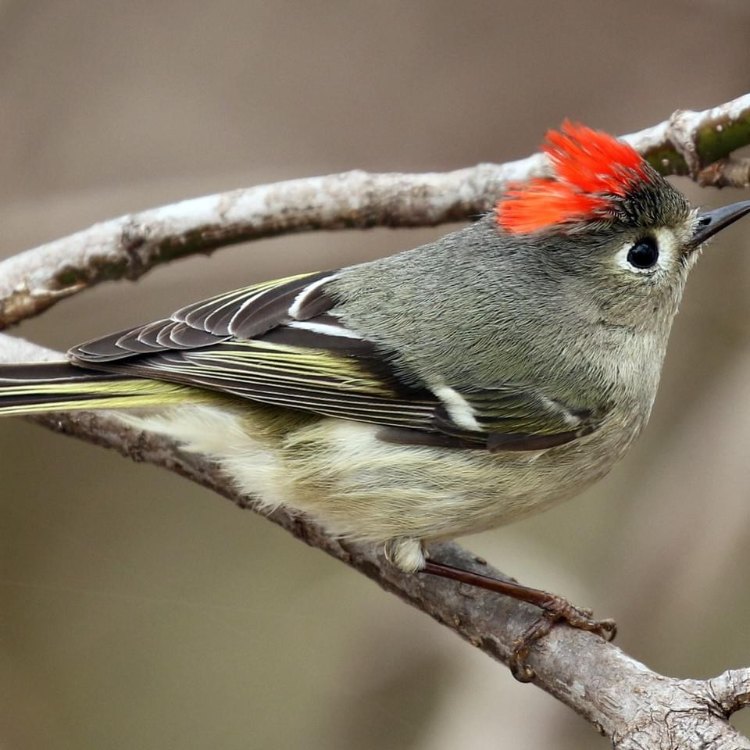
Ruby Crowned Kinglet
- Adult Size: Small
- Average Lifespan: Less than 10 years
- Reproduction: Monogamous
- Reproductive Behavior: Mating pairs build nests together
- Sound or Call: High-pitched songs and calls
- Migration Pattern: Migratory
- Social Groups: Solitary or in small groups
- Behavior: Active and agile
- Threats: Habitat loss and climate change
- Conservation Status: Least Concern
- Impact on Ecosystem: Control of insect populations
- Human Use: Birdwatching
- Distinctive Features: Bright red crown (males) or yellow crown (females)
- Interesting Facts: The ruby crown is usually concealed, but can be erected to display during courtship or territorial disputes.
- Predator: Birds of prey
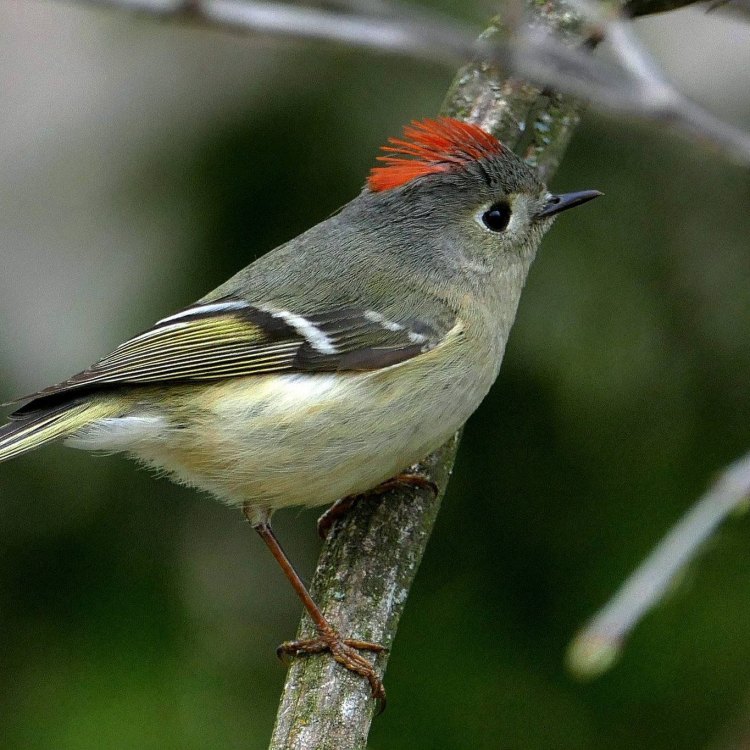
Regulus calendula
The Dainty and Dynamic Ruby Crowned Kinglet: A Jewel Among Birds
The forest is alive with the melodious songs of birds, each singing a unique tune to attract potential mates or proclaim their territory. Amidst this symphony of sounds, the ruby crowned kinglet stands out with its high-pitched call and striking appearance. This small but mighty bird is a true gem, both in terms of its physical features and its vital role in the ecosystem. Let's take a closer look at the fascinating and dynamic world of the ruby crowned kinglet PeaceOfAnimals.Com.Size and Lifespan
The ruby crowned kinglet is a petite bird, measuring only 3.5-4 inches in length and weighing a mere 0.2-0.3 ounces. Its size makes it one of the smallest birds in North America, but don't let its small stature fool you – it is full of energy and agility. This bird's average lifespan is less than 10 years, a relatively short life span compared to other birds. However, they make the most of their years by being active and productive members of their ecosystem.
Reproduction and Behavior
The ruby crowned kinglet's reproductive behavior is monogamous, meaning they mate with only one partner throughout their lives. This helps them form strong bonds with their partners and ensures the successful raising of their young Rottsky. Mating pairs build their nests together, creating a cozy and secure home for their eggs and fledglings. These nests are usually made of moss, feathers, and spiderwebs and are tucked away in the thick foliage of trees.
Sound and Migration Patterns
The ruby crowned kinglet may be small, but it has a big voice. Their songs and calls are high-pitched and melodious, making them easy to locate in the dense forests they inhabit. They are migratory birds, meaning they travel long distances to breed and seek out better food sources. They can be found across North America, from Alaska to Mexico, and even in parts of Canada.
Social Groups and Behavior
Ruby crowned kinglets are either solitary or found in small groups, typically made up of their breeding pair and their young. They are active birds, constantly flitting around in search of food, and their agile movements make them challenging to spot. They are also known for their curious behavior, often investigating their surroundings and even approaching humans out of curiosity.
Threats and Conservation Status
Unfortunately, like many other species in the animal kingdom, the ruby crowned kinglet faces multiple threats. Habitat loss due to deforestation and severe weather conditions caused by climate change are significant challenges that impact this bird's survival. However, the good news is that the ruby crowned kinglet's conservation status is currently listed as "Least Concern." This is due to its large population and wide range, but conservation efforts are still crucial to ensure their continued survival.
Impact on the Ecosystem
The ruby crowned kinglet may be small, but it plays a crucial role in maintaining balance in the ecosystem. These birds are insectivores, meaning they primarily feed on insects. Insects can be pests, damaging crops and causing harm to forests if left unchecked. Ruby crowned kinglets help control insect populations, making them an essential part of the food chain.
Human Use and Distinctive Features
People may not directly use the ruby crowned kinglet, but it is a beloved bird among birdwatchers. Its bright red crown in males and yellow crown in females, although usually concealed, makes it stand out in the forest. These colors, especially the vibrant red, are used to attract mates and also during territorial disputes. Observing these birds in their natural habitat is a treat for birdwatchers and nature enthusiasts.
Interesting Facts and Predators
Apart from its distinctive crown, the ruby crowned kinglet has other interesting features. They have a unique habit of flicking their long flight feathers, which is believed to be a form of communication with their partners. They are also known for their ability to "fluff up" their feathers, creating an air pocket that helps them stay warm and conserve energy during cold weather. As for predators, birds of prey, such as hawks and falcons, are their main threats.
In conclusion, the ruby crowned kinglet may be small in size, but it is a fascinating and essential part of the ecosystem. Its striking appearance, distinct behavior, and vital role in controlling insect populations make it a bird worth admiring and protecting. So next time you take a walk in the forest, keep an eye and an ear out for this dynamic and dainty jewel of a bird – the ruby crowned kinglet.
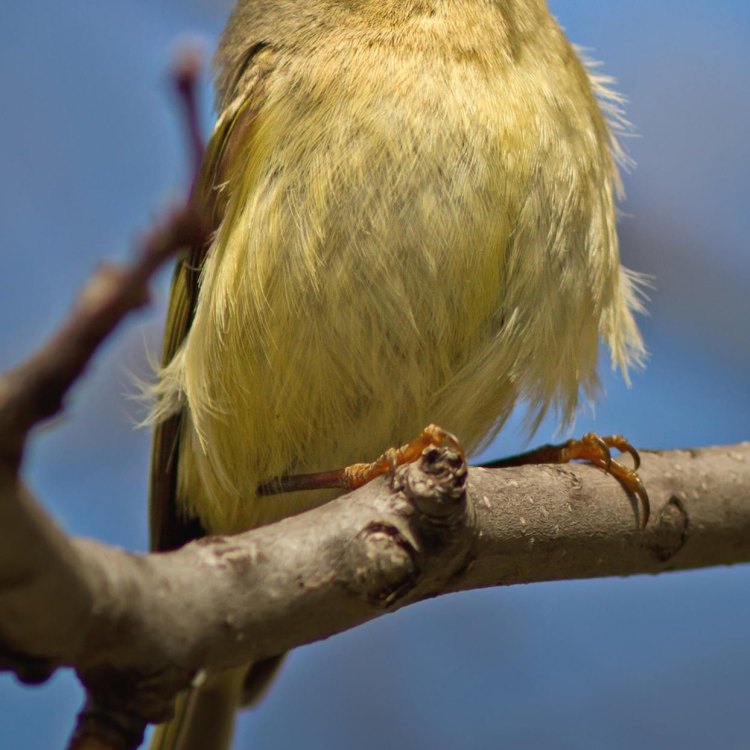
Ruby Crowned Kinglet: The Tiny Bird with a Big Personality and Stunning Crown
Disclaimer: The content provided is for informational purposes only. We cannot guarantee the accuracy of the information on this page 100%. All information provided here may change without prior notice.

